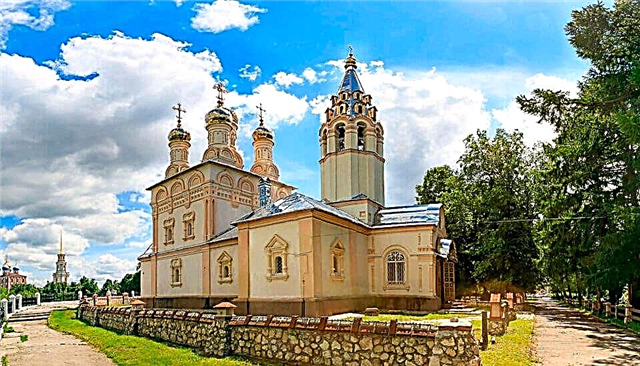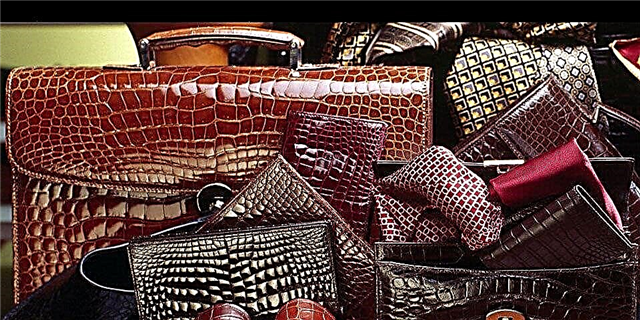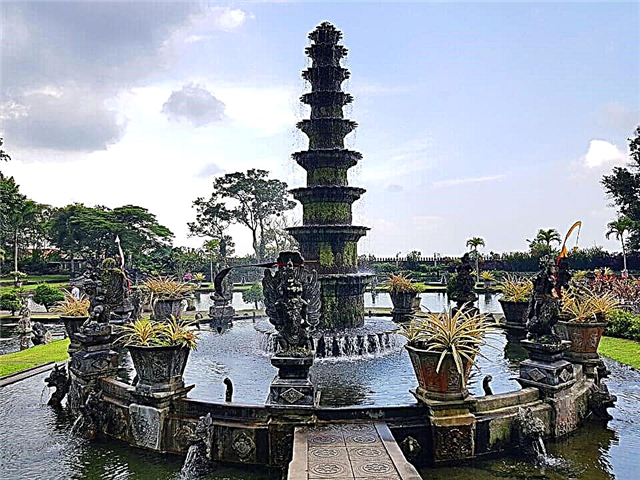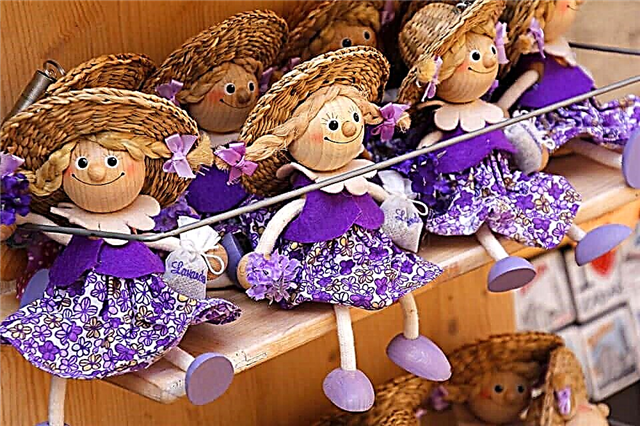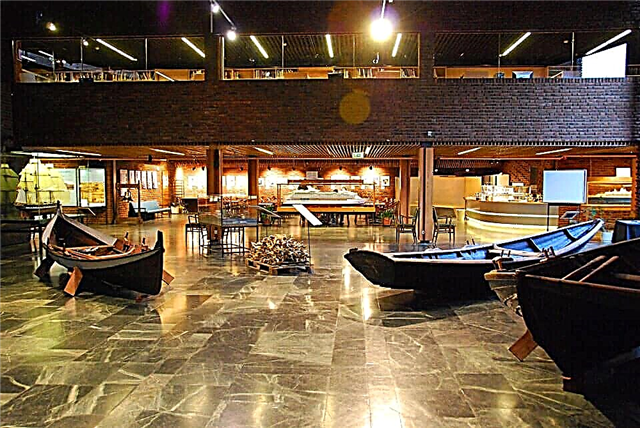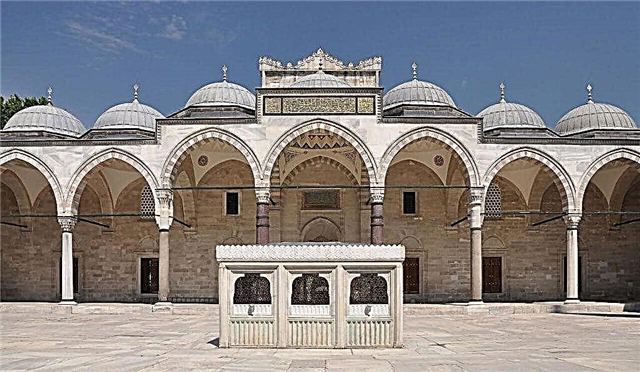Admirers of beach tourism have long taken a liking to the gentle sun and warm water on the shores of Turkey. But in this country there are historical and architectural monuments that are appreciated by travelers. One of them is the Suleymaniye Mosque. This grandiose structure was built in 1557 by an outstanding urban planner of that era named Sinan. For almost a century of his life, he served five Turkish rulers, under his leadership, dozens of architectural masterpieces were created.
Construction history

Sultan Suleiman The legislator made a great contribution to the flourishing of the Ottoman Empire. The construction of the mosque, rather a whole complex, was another testament to the greatness and brilliance of his reign. Several legends related to the construction of this monumental temple have survived to this day. According to the ruler, the work was going too slowly, he even hinted to Sinan about the fate of the architect Ayaz, who was executed for sluggishness a century earlier by Mehmed II.
There was a time when the padishah wanted to stop construction work altogether. But ambition did not allow it to be done. The fact is that the Iranian Shah Tahmasp sent ambassadors with gifts and jewelry. In the attached letter, he indicated that he was contributing to the construction, since Suleiman did not have the strength and money to complete it. The enraged ruler gave gifts to merchants, and ordered to put expensive stones in the foundation of one of the minarets. Everything went much faster.
As a result of the colossal work of hundreds of craftsmen and artisans, Sulemaniye pleases Muslims, making it possible for more than 5,000 people to simultaneously reunite in such a beautiful place through prayer. And it delights guests of the city who saw this stunning confirmation of the importance of faith in the power of the ruler and the prosperity of the state.
Description

The construction of the structure was carried out for 7 years. The reason for this is not a lack of funding. Magnificent gave the architect an unlimited loan. No, the architect Sinan built for centuries. He understood that it was impossible to create a masterpiece in an area with constant earthquakes. There were no construction methods in earthquake-prone areas at that time.
Sinan did all the calculations himself. And they turned out to be absolutely correct: Suleymaniye stood for more than 4 centuries, withstood more than one earthquake of magnitude 7-8. Many tourists see the similarity of the structure with Hagia Sophia. Look like 4 minarets, details of the facade. Perhaps Sinan, willingly or unwillingly, copied the features of the building known to the whole world.
Occupies an area of over 4 thousand square meters. Here, in addition to the mosque, are located:
- caravanserai
- madrasah
- library
- hospital
- baths
- shelter
- kitchen and dining room
- shops of artisans and merchants
There is a mosque in the middle of a blossoming well-groomed garden. You can go inside through 11 gates. There are fountains on the territory. Some of them (Shadyrvan) are intended for ablution before prayer. You can get inside by entering through 1 of 3 gates into a special courtyard. Columns surround it. There is one more yard - back.
It is on it that the pavilions of traders and artisans are arranged. After passing through the backyard, tourists come to the mausoleums of Suleiman the Magnificent himself and his wife, Alexandra Anastasia Lisowska, who converted to Islam Roksolana. There is a terrace in the garden. Some guests use it as an observation deck. A marvelous panorama of the Golden Horn Bay opens from here. For those who like to be photographed, this is a great place.
Architecture

The mosque was built by an Armenian who converted to Islam - Kemal ad-din Sinan. The customer was Suleiman the Magnificent. Therefore, it is not surprising that all architectural solutions are aimed at exalting the ruler:
- 4 minarets mean the Magnificent is the 4 lord of Istanbul
- 10 balconies mean that Suleiman is 10 son of the Ottomans
- Dome calligraphy magnifies Allah and the one he leads
The building is decorated with columns that once adorned the churches of Constantinople. Kemal Sinan successfully entered them into the design, perpetuating the victory of the Ottomans over Byzantium. 5 thousand Muslims can pray at the same time. Despite the fact that the minarets are different in height, their distant location makes it invisible to the eye. The building itself is built on a hill, dominating the surrounding area. Trees are planted in the courtyard to create a pleasant shade and not overshadow the beauty of the main building.
Interior decoration

Despite the fact that Sinan could not resist copying Hagia Sophia, he managed to embody amazing things in the interior. He arranged the lighting in such a way that those who entered came from a column of light. This illusion is the result of a deliberate arrangement of windows: 32 of them are cut into the dome, and 136 of them let in sunlight around the perimeter.
4.5 centuries ago there were no microphones and amplifiers. To organize amazing acoustics, Sinan walled empty jugs into the walls. They resonate, so the sound travels with equal strength throughout the room. At night, the building is illuminated by an amazing chandelier. Previously, candles were used for this, now - electric lamps.
If you look up, the dome appears to be receding into the sky. This is also the result of the construction of the windows.
The walls were painted by Hasan Chelebi himself. The ornaments that he weaved into the suras of the Koran are still impressive. The thinnest colored glass was used for the stained-glass windows. Marble and wood of valuable species were used for the partitions.
Interesting Facts

Such an amazing structure could not but be overgrown with mysterious stories. Now it is difficult to assert whether all this actually happened. But interesting legends are passed down from generation to generation:
- About the poverty of Sultan Suleiman. Despite the continuous funding from the treasury, the construction was delayed. The Shah of Persia learned about this. He ordered, in a mockery of the neighboring ruler, to send jewelry as a gift. The hint was interpreted correctly: Suleiman got angry and ordered to lay the foundation of one of the minarets from donated rubies, diamonds, sapphires.
- About spies and amazing acoustics. Suleiman maintained a whole army of informers. Every more or less significant event became known to the ruler. This time he was told that Sinan, instead of completing the building, sit and do nothing.
The tsar himself decided to check whether the denunciation was correct. He went to the mosque and saw Sinan sitting in the center with a vessel filled with water in his hands. When asked by the ruler, the architect replied that he was checking the sound propagation inside the building. To do this, he shook the container and listened to how the sound was reflected from the walls of the mosque. The spies were put to shame. - About the interior and ostrich eggs. Some tourists wonder: why were ostrich eggs hung among the lamps? The answer is simple: this is not a detail of the decoration of the room. Huge shells ward off spiders and poisonous insects. This ingenious solution protects worshipers from real danger.
What else can you see

A number of other buildings adjoin the mosque. This is a library, an observatory, a hospital, several kitchens, baths, schools. Schools (madrasahs) occupy a large area and have a serious impact on the life of local residents. The courtyard with fountains for ritual ablution before prayer on the south side plays an important role in Islamic culture.
All these structures, built together with the mosque, are also works of art, decorated with exquisite carvings, slabs, and frescoes. On the western side is the front courtyard, 24 marble columns with painted arches support 28 domes. Four minarets (one "precious") with ten carved balconies indicate that Suleiman is the tenth padishah of the Ottoman Empire, and the fourth after Istanbul was conquered.
The wide building in front of the courtyard is also decorated with domes.Previously, there was a caravanserai, where they received visiting merchants and guests who could eat in it for free for three days. Today there is a chic restaurant "Daruzziyafe" with national cuisine. It is noteworthy that the Turks do not consider vegetables as a secondary product, although they respect meat very much (not pork, of course).
They treat bread very carefully, throwing it away is a great sin, even if you accidentally drop it, you must immediately pick it up, kiss it and apply it to the eye. These are the traditions. There is no need to talk about Turkish sweets, because these are our favorite dishes: sherbet, baklava, Turkish delight ...
There is a small street very close to the restaurant, trade stalls have been standing on it since those times. It was only then that opium was sold here, but now you can buy snacks, water and many charming souvenirs here, delighting tourists and their loved ones who are left at home.
There is an old cemetery in the backyard. Despite the fact that these are burials, there are always many visitors. They are attracted by the originality and sophistication of these places. Each tombstone was made by artists, since rich nobles and courtyard nobility were buried here.
Mausoleums

Two mausoleums contain the bodies of Suleiman the Legislator himself and his beloved wife Haseki Hurem, we better know her other name - Roksolana. It is surrounded by exquisite ceramic tiles depicting the Garden of Eden, texts of poems dedicated to the beauty and lively mind of this woman. The Sultan's turbe, of course, is much more magnificent. In addition, it contains the tombs of two more padishahs: Sultan Ahmed II and Sultan Suleiman II.
Suleymeniye occupies a huge area, about 4.5 thousand square meters. On its territory there are luxurious monuments of architecture, lavishly decorated with priceless creations. The creator of all this, Sinan, is buried here. He promised his master that the mosque would stand forever, as he used a special technology that protects the walls from destruction during earthquakes. For almost 500 years, there have been 89 such disasters, and quite large ones. But until now, this architectural masterpiece fulfills its main functions. And who knows how many more generations will admire its beauty.
Rules of behavior
When planning a visit, it is important to understand: the mosque is active, so it is unlikely that it will be possible to go inside for an excursion at any time. On Friday, prayer lasts a good half of the day, so excursions are limited. A special area has been allocated for guests; you should not go outside of it.
On ordinary days, guests can explore the pearl of Istanbul from 9 am to half past midday and from half past one to half past four in the afternoon. The feelings of believers should be respected. Before entering, you will have to take off your shoes, put them in a bag and leave them on the bench. Women are advised to cover their bare arms and shoulders and wear a scarf. For men, wear a hat.
Too revealing outfits are not welcome. In such toilets, they may not be allowed inside. Wraps, shawls and shoe bags are given free of charge upon entry. The same rules are recommended to be observed when visiting the mausoleum of Suleiman the Magnificent and his wife Alexandra Anastasia Lisowska. In addition, it is forbidden to speak loudly near the burial site.
How to get there
The mosque is located in the historical district of Fattih (Vefa), at 8 Saddyk Sami Onar Street. The closest landmark is the Eminonu ferry. It is easier to get here from the central Sultanahmet square. Find the T1 tram stop. You need to get off at the Eminonu stop.
Some tourists prefer to take the same T1 at Sultanahmet Square, but get off at the Laleli-University stop. In this case, you will have to wade through the narrow streets of the city. The third way is to get to the Egyptian Bazaar. You will have to go not far and almost all the time straight. Landmarks are minarets that can be seen from any part of the area.
Some guests prefer to use the metro. In this case, it is recommended to take the M2 line and move in the direction of Vezneciler station. Bus lovers are advised to take routes 26A, 26B, 70KE and 336 to the Eminönü Kantarcılar stop.


